Sundeep Rangan
NYU Tandon School of Engineering
Traffic Adaptive Moving-window Service Patrolling for Real-time Incident Management during High-impact Events
Apr 15, 2025



Abstract:This paper presents the Traffic Adaptive Moving-window Patrolling Algorithm (TAMPA), designed to improve real-time incident management during major events like sports tournaments and concerts. Such events significantly stress transportation networks, requiring efficient and adaptive patrol solutions. TAMPA integrates predictive traffic modeling and real-time complaint estimation, dynamically optimizing patrol deployment. Using dynamic programming, the algorithm continuously adjusts patrol strategies within short planning windows, effectively balancing immediate response and efficient routing. Leveraging the Dvoretzky-Kiefer-Wolfowitz inequality, TAMPA detects significant shifts in complaint patterns, triggering proactive adjustments in patrol routes. Theoretical analyses ensure performance remains closely aligned with optimal solutions. Simulation results from an urban traffic network demonstrate TAMPA's superior performance, showing improvements of approximately 87.5\% over stationary methods and 114.2\% over random strategies. Future work includes enhancing adaptability and incorporating digital twin technology for improved predictive accuracy, particularly relevant for events like the 2026 FIFA World Cup at MetLife Stadium.
Computationally Efficient Signal Detection with Unknown Bandwidths
Apr 12, 2025Abstract:Signal detection in environments with unknown signal bandwidth and time intervals is a basic problem in adversarial and spectrum-sharing scenarios. This paper addresses the problem of detecting signals occupying unknown degrees of freedom from non-coherent power measurements where the signal is constrained to an interval in one dimension or hypercube in multiple dimensions. A Generalized Likelihood Ratio Test (GLRT) is derived, resulting in a straightforward metric involving normalized average signal energy on each candidate signal set. We present bounds on false alarm and missed detection probabilities, demonstrating their dependence on signal-to-noise ratios (SNR) and signal set sizes. To overcome the inherent computational complexity of exhaustive searches, we propose a computationally efficient binary search method, reducing the complexity from O(N2) to O(N) for one-dimensional cases. Simulations indicate that the method maintains performance near exhaustive searches and achieves asymptotic consistency, with interval-of-overlap converging to one under constant SNR as measurement size increases. The simulation studies also demonstrate superior performance and reduced complexity compared to contemporary neural network-based approaches, specifically outperforming custom-trained U-Net models in spectrum detection tasks.
Upper Mid-Band Spectrum for 6G: Vision, Opportunity and Challenges
Feb 25, 2025Abstract:Driven by the pursuit of gigabit-per-second data speeds for future 6G mobile networks, in addition to the support of sensing and artificial intelligence applications, the industry is expanding beyond crowded sub-6 GHz bands with innovative new spectrum allocations. In this paper, we chart a compelling vision for 6G within the frequency range 3 (FR3) spectrum, i.e. $7.125$-$24.25$ $\GHz$, by delving into its key enablers and addressing the multifaceted challenges that lie ahead for these new frequency bands. Here we highlight the physical properties of this \textcolor{black}{never-before} used spectrum by reviewing recent channel measurements for outdoor and indoor environments, including path loss, delay and angular spreads, and material penetration loss, all which offer insights that underpin future 5G/6G wireless communication designs. Building on the fundamental knowledge of the channel properties, we explore FR3 spectrum agility strategies that balance coverage and capacity (e.g. data rate) tradeoffs, while also examining coexistence with incumbent systems, such as satellites, radio astronomy, and earth exploration. Moreover, we discuss the potential of massive multiple-input multiple-output, compact and digital architectures, and evaluate the potential of multiband sensing for FR3 integrated sensing and communications. Finally, we outline 6G standardization features that are likely to emerge from 3GPP radio frame innovations and open radio access network developments.
Near-Field Measurement System for the Upper Mid-Band
Dec 03, 2024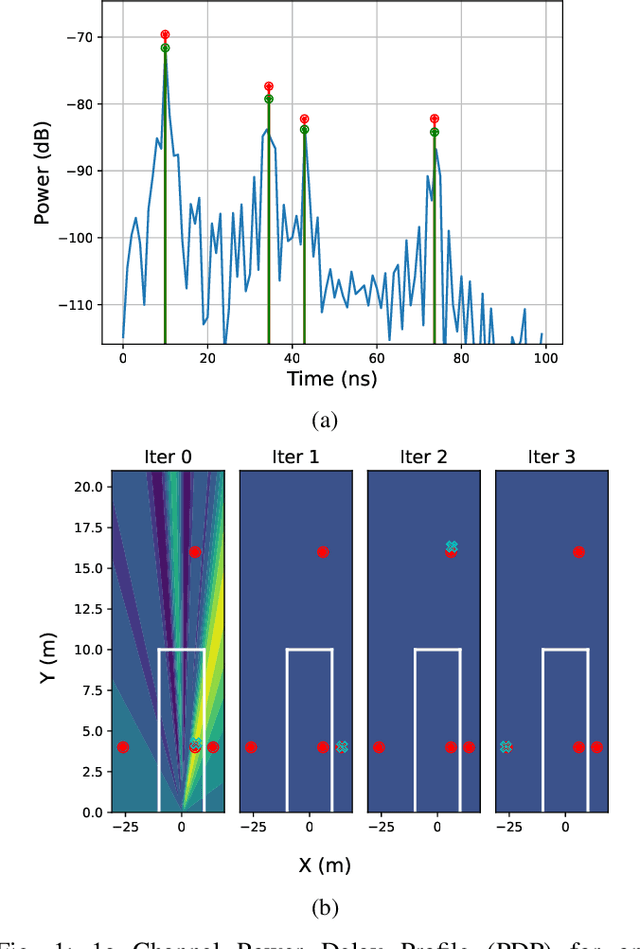

Abstract:The upper mid-band (or FR3, spanning 6-24 GHz) is a crucial frequency range for next-generation mobile networks, offering a favorable balance between coverage and spectrum efficiency. From another perspective, the systems operating in the near-field in both indoor environment and outdoor environments can support line-of-sight multiple input multiple output (MIMO) communications and be beneficial from the FR3 bands. In this paper, a novel method is proposed to measure the near-field parameters leveraging a recently developed reflection model where the near-field paths can be described by their image points. We show that these image points can be accurately estimated via triangulation from multiple measurements with a small number of antennas in each measurement, thus affording a low-cost procedure for near-field multi-path parameter extraction. A preliminary experimental apparatus is presented comprising 2 transmit and 2 receive antennas mounted on a linear track to measure the 2x2 MIMO channel at various displacements. The system uses a recently-developed wideband radio frequency (RF) transceiver board with fast frequency switching, an FPGA for fast baseband processing, and a new parameter extraction method to recover paths and spherical characteristics from the multiple 2x2 measurements.
An Experimental Multi-Band Channel Characterization in the Upper Mid-Band
Nov 19, 2024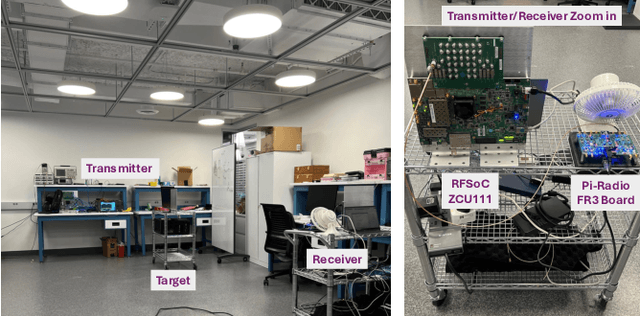
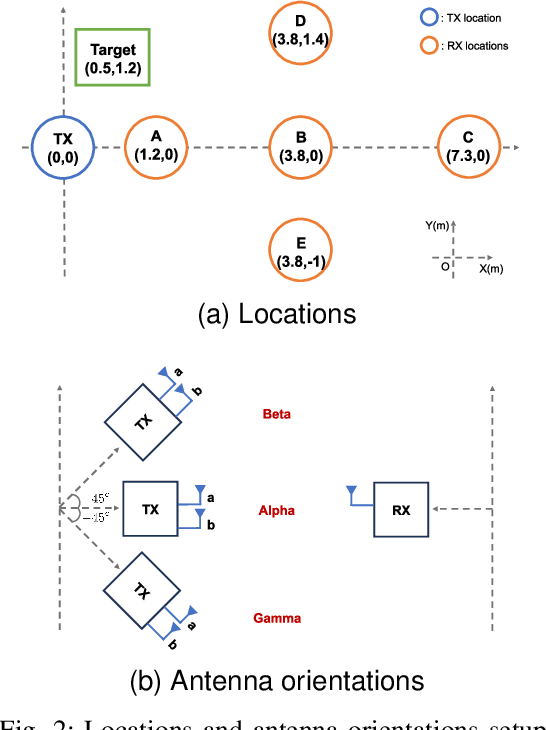
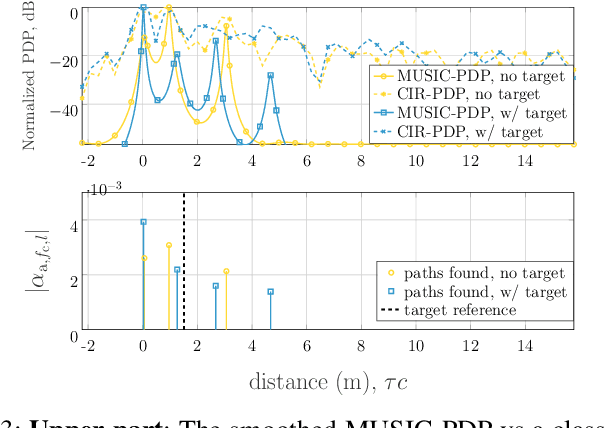

Abstract:The following paper provides a multi-band channel measurement analysis on the frequency range (FR)3. This study focuses on the FR3 low frequencies 6.5 GHz and 8.75 GHz with a setup tailored to the context of integrated sensing and communication (ISAC), where the data are collected with and without the presence of a target. A method based on multiple signal classification (MUSIC) is used to refine the delays of the channel impulse response estimates. The results reveal that the channel at the lower frequency 6.5 GHz has additional distinguishable multipath components in the presence of the target, while the one associated with the higher frequency 8.75 GHz has more blockage. The set of results reported in this paper serves as a benchmark for future multi-band studies in the FR3 spectrum.
Channel Modeling for FR3 Upper Mid-band via Generative Adversarial Networks
Apr 25, 2024Abstract:The upper mid-band (FR3) has been recently attracting interest for new generation of mobile networks, as it provides a promising balance between spectrum availability and coverage, which are inherent limitations of the sub 6GHz and millimeter wave bands, respectively. In order to efficiently design and optimize the network, channel modeling plays a key role since FR3 systems are expected to operate at multiple frequency bands. Data-driven methods, especially generative adversarial networks (GANs), can capture the intricate relationships among data samples, and provide an appropriate tool for FR3 channel modeling. In this work, we present the architecture, link state model, and path generative network of GAN-based FR3 channel modeling. The comparison of our model greatly matches the ray-tracing simulated data.
Spatially Consistent Air-to-Ground Channel Modeling via Generative Neural Networks
Feb 05, 2024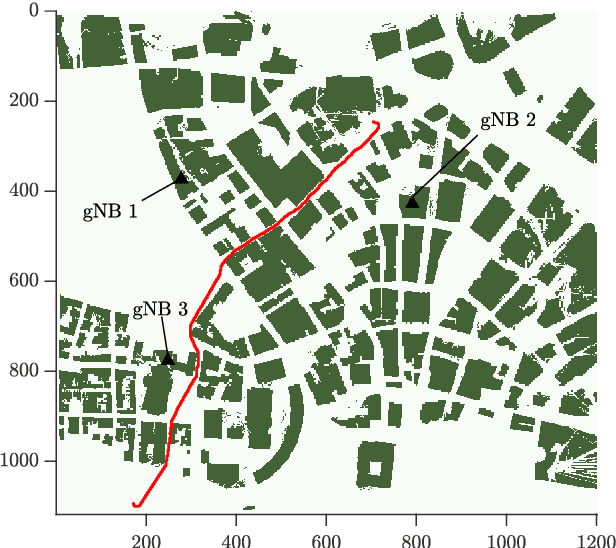
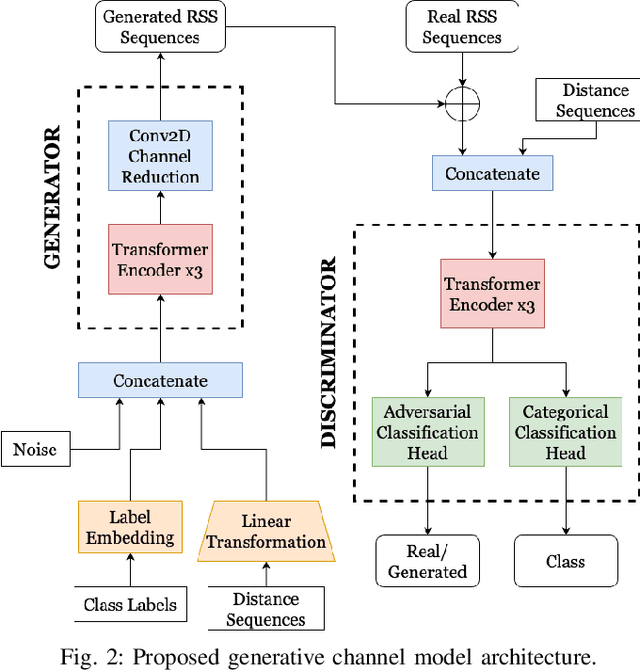
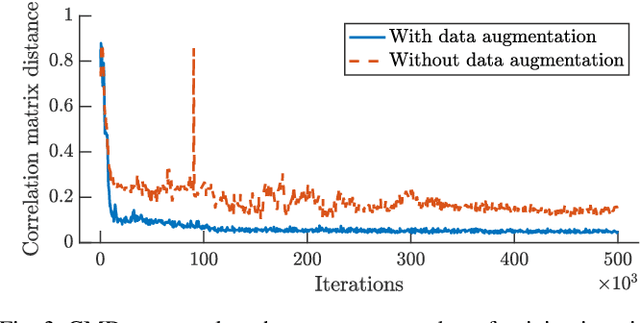

Abstract:This article proposes a generative neural network architecture for spatially consistent air-to-ground channel modeling. The approach considers the trajectories of uncrewed aerial vehicles along typical urban paths, capturing spatial dependencies within received signal strength (RSS) sequences from multiple cellular base stations (gNBs). Through the incorporation of conditioning data, the model accurately discriminates between gNBs and drives the correlation matrix distance between real and generated sequences to minimal values. This enables evaluating performance and mobility management metrics with spatially (and by extension temporally) consistent RSS values, rather than independent snapshots. For some tasks underpinned by these metrics, say handovers, consistency is essential.
Estimation of embedding vectors in high dimensions
Dec 12, 2023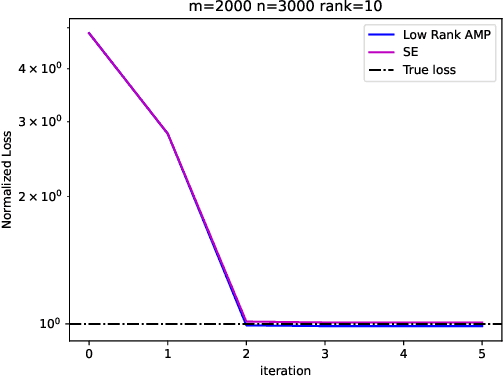
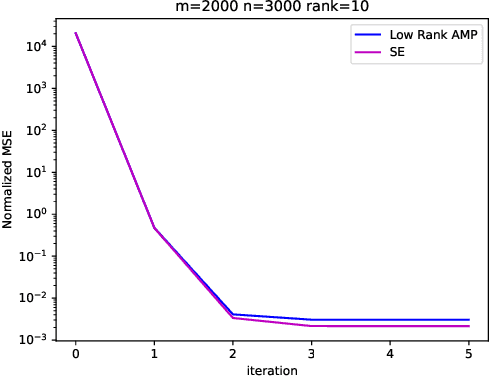
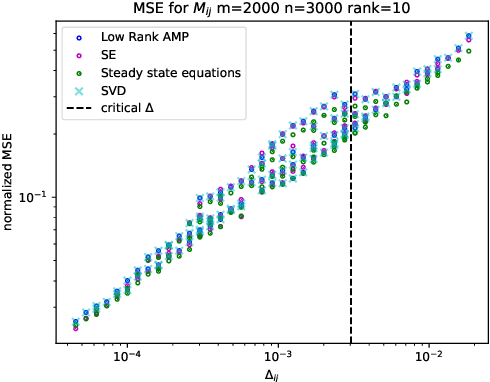
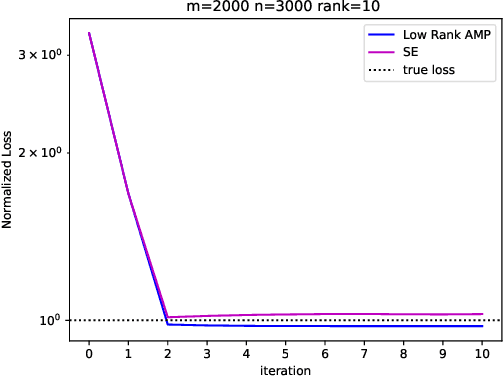
Abstract:Embeddings are a basic initial feature extraction step in many machine learning models, particularly in natural language processing. An embedding attempts to map data tokens to a low-dimensional space where similar tokens are mapped to vectors that are close to one another by some metric in the embedding space. A basic question is how well can such embedding be learned? To study this problem, we consider a simple probability model for discrete data where there is some "true" but unknown embedding where the correlation of random variables is related to the similarity of the embeddings. Under this model, it is shown that the embeddings can be learned by a variant of low-rank approximate message passing (AMP) method. The AMP approach enables precise predictions of the accuracy of the estimation in certain high-dimensional limits. In particular, the methodology provides insight on the relations of key parameters such as the number of samples per value, the frequency of the terms, and the strength of the embedding correlation on the probability distribution. Our theoretical findings are validated by simulations on both synthetic data and real text data.
VisPercep: A Vision-Language Approach to Enhance Visual Perception for People with Blindness and Low Vision
Oct 31, 2023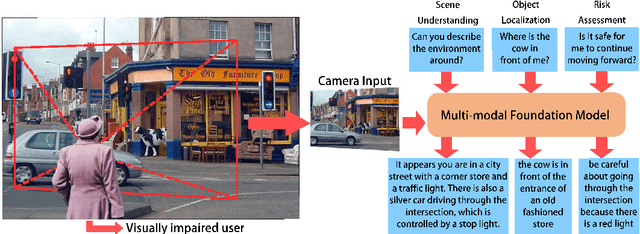

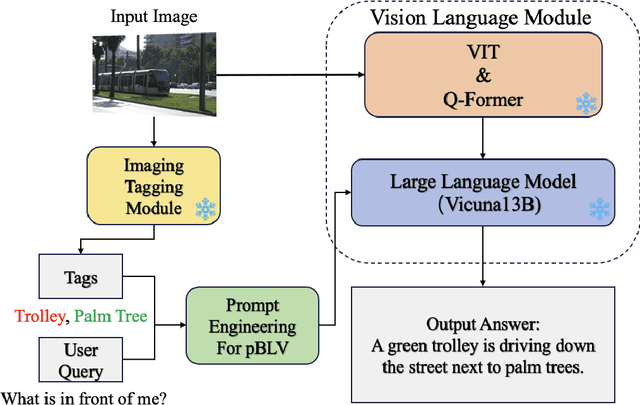

Abstract:People with blindness and low vision (pBLV) encounter substantial challenges when it comes to comprehensive scene recognition and precise object identification in unfamiliar environments. Additionally, due to the vision loss, pBLV have difficulty in accessing and identifying potential tripping hazards on their own. In this paper, we present a pioneering approach that leverages a large vision-language model to enhance visual perception for pBLV, offering detailed and comprehensive descriptions of the surrounding environments and providing warnings about the potential risks. Our method begins by leveraging a large image tagging model (i.e., Recognize Anything (RAM)) to identify all common objects present in the captured images. The recognition results and user query are then integrated into a prompt, tailored specifically for pBLV using prompt engineering. By combining the prompt and input image, a large vision-language model (i.e., InstructBLIP) generates detailed and comprehensive descriptions of the environment and identifies potential risks in the environment by analyzing the environmental objects and scenes, relevant to the prompt. We evaluate our approach through experiments conducted on both indoor and outdoor datasets. Our results demonstrate that our method is able to recognize objects accurately and provide insightful descriptions and analysis of the environment for pBLV.
Spectral vs Energy Efficiency in 6G: Impact of the Receiver Front-End
Oct 12, 2023Abstract:This article puts the spotlight on the receiver front-end (RFE), an integral part of any wireless device that information theory typically idealizes into a mere addition of noise. While this idealization was sound in the past, as operating frequencies, bandwidths, and antenna counts rise, a soaring amount of power is required for the RFE to behave accordingly. Containing this surge in power expenditure exposes a harsher behavior on the part of the RFE (more noise, nonlinearities, and coarse quantization), setting up a tradeoff between the spectral efficiency under such nonidealities and the efficiency in the use of energy by the RFE. With the urge for radically better power consumptions and energy efficiencies in 6G, this emerges as an issue on which information theory can cast light at a fundamental level. More broadly, this article advocates the interest of having information theory embrace the device power consumption in its analyses. In turn, this calls for new models and abstractions such as the ones herein put together for the RFE, and for a more holistic perspective.
 Add to Chrome
Add to Chrome Add to Firefox
Add to Firefox Add to Edge
Add to Edge